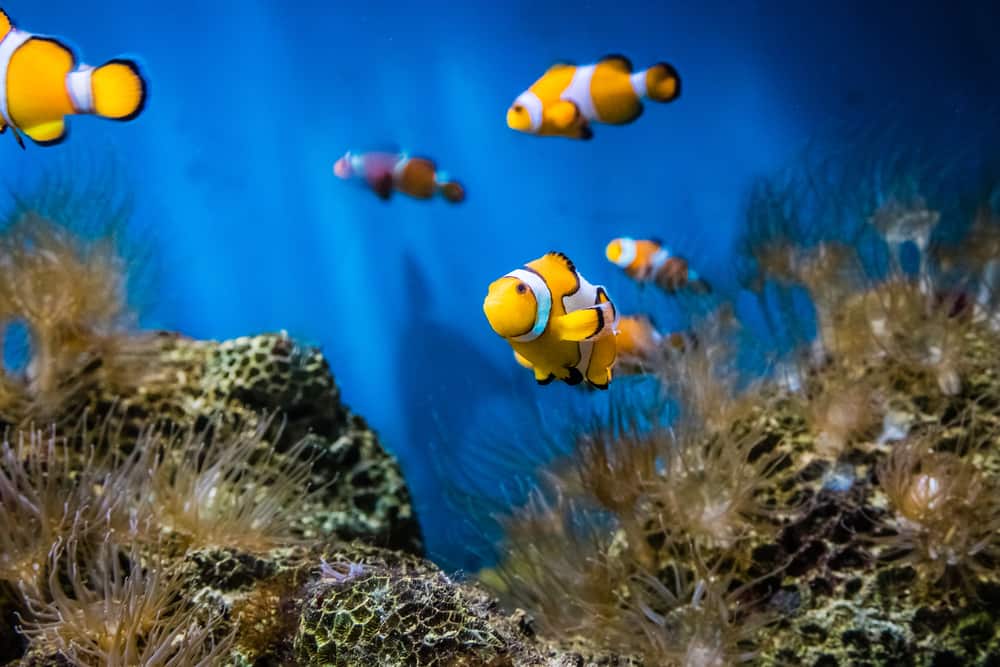
If you’re interested in starting a 10 gallon saltwater tank, you should begin by deciding on the best species for it.
We give you the top 20 best saltwater fish for a 10 gallon tank.
Top 20 Best Saltwater Fish for a 10-Gallon Tank
1. Clown Goby
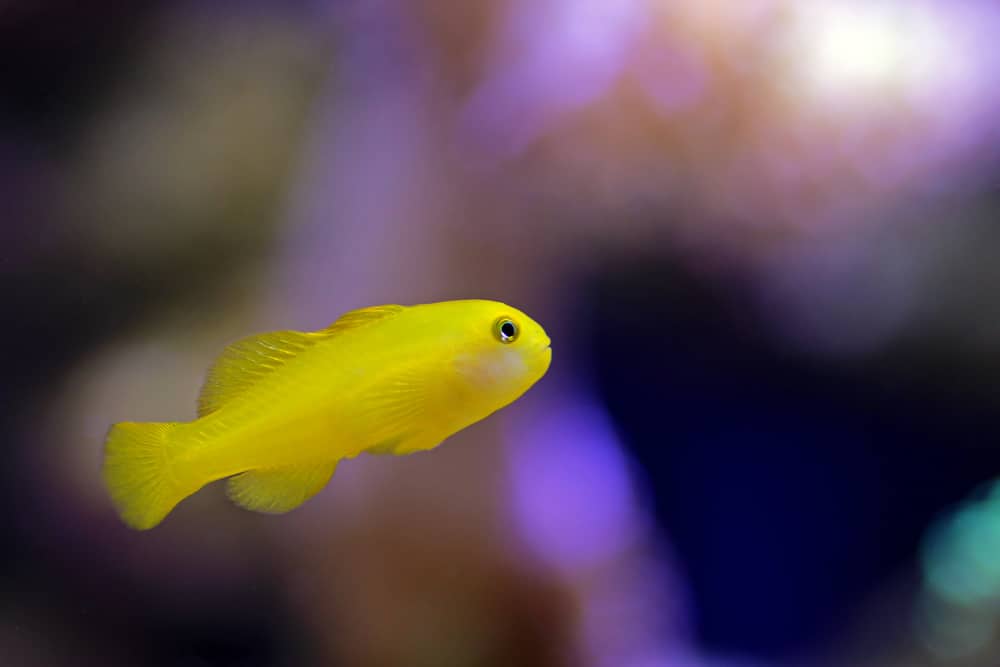
These playful creatures love to jump around corals and rocks or perch in plain sight.
They’re only around half an inch long at first and grow to a maximum of 1.5 inches, which makes them a perfect addition to a 10-gallon tank.
The clown goby can add to the beauty of your tank with its vibrant yellow colors, hovering freely along the water column and parading in front of your eyes.
Plus, they’re reef-friendly, so if you have soft or hard coral, they can thrive well in the tank.
They get on well with other species but can be competitive and territorial with their kind.
Make sure to add only one of them to your tank, especially if your tank is small.
Its diet consists of frozen food for carnivores, table or brine shrimp, and frozen Mysis shrimp.
It’s effortless to take care of and generally eats well.
You can’t really go wrong with this fish if you’re a beginner.
2. White Banded Possum Wrasse
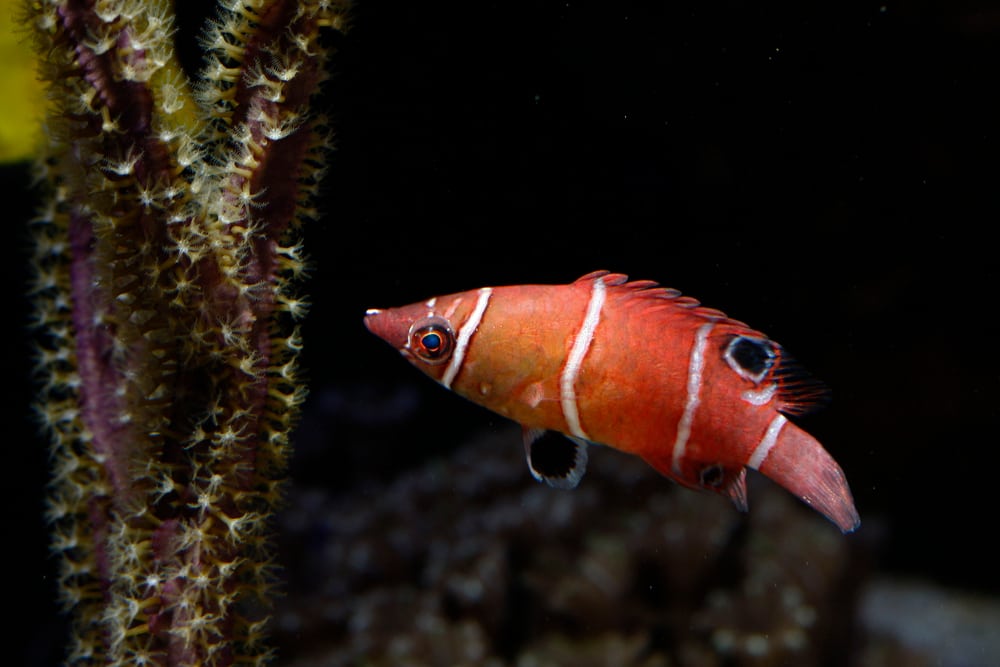
The white-banded possum wrasse is another popular small tank fish which is easy to keep, and it survives in different conditions.
It can bring beauty and energy to any tank with its attractive red and black stripes and spots.
It’s a peaceful species that doesn’t bother any other tank creatures, including corals, invertebrates, or fish.
Since they love to jump, it’s better to have a sturdy canopy installed to prevent them from jumping out of the tank.
The white-banded possum wrasse is a micro-carnivore that loves to eat live rock-inhabiting crustaceans and worms in addition to aquarium foods.
They particularly appreciate flake food, Cyclop-eeze, and Mysis shrimp.
Since they’re almost too peaceful and solitary, they may be dominated by larger fish, especially when introduced to a new tank.
Therefore, it’s better to keep them in a refugium until they get acquainted with their new home.
3. Yellow Watchman Goby

This fantastic species is distinctive with its amusing frown and unique lips and tiny blue spots on its face.
Also referred to as the Yellow Shrimp Goby or the Yellow Prawn, it makes symbiotic relationships with snapping shrimp, who clean up after the Watchman Goby when it’s finished eating.
Although it’s non-aggressive, it is jumpy.
Because of that, it’s a good idea to install a tight-fitting lid to prevent it from escaping.
This bottom-dwelling fish doesn’t do well under strong currents, so make sure to provide enough burrow room with lots of coral rubble and sand on the bottom.
You can keep it with other fish of its kind, but not with the same sex, or you’ll see aggressive fights between them.
Therefore, you should either keep only one watchman goby or pair it with another one to mate.
Although it’s known as yellow watchman goby, it comes in various colors, including brown, orange, and grey.
4. Hancock’s Blenny

These fascinating fish have red eyes with large brown and black spotting on their silvery yellow skin.
Due to their transparent tails and fins, they can easily hide out in the open.
They can range from three-quarters of an inch to one and a half inches.
This miniature carnivorous fish is another peaceful addition to any tank and easy to care for since it will eat anything.
Make sure there are plenty of hiding places and live rock for this entertaining species.
You’ll enjoy watching it race to catch food and escape from bigger fish.
Give it a wide range of meaty foods like crustacean, frozen brine, and Mysis shrimp.
It also feeds on zooplankton in its natural habitat, empty worm and mollusk tubes in rocky reef depth.
You could add plants like Chaeto algae that provide a home for zooplanktons.
5. Clownfish
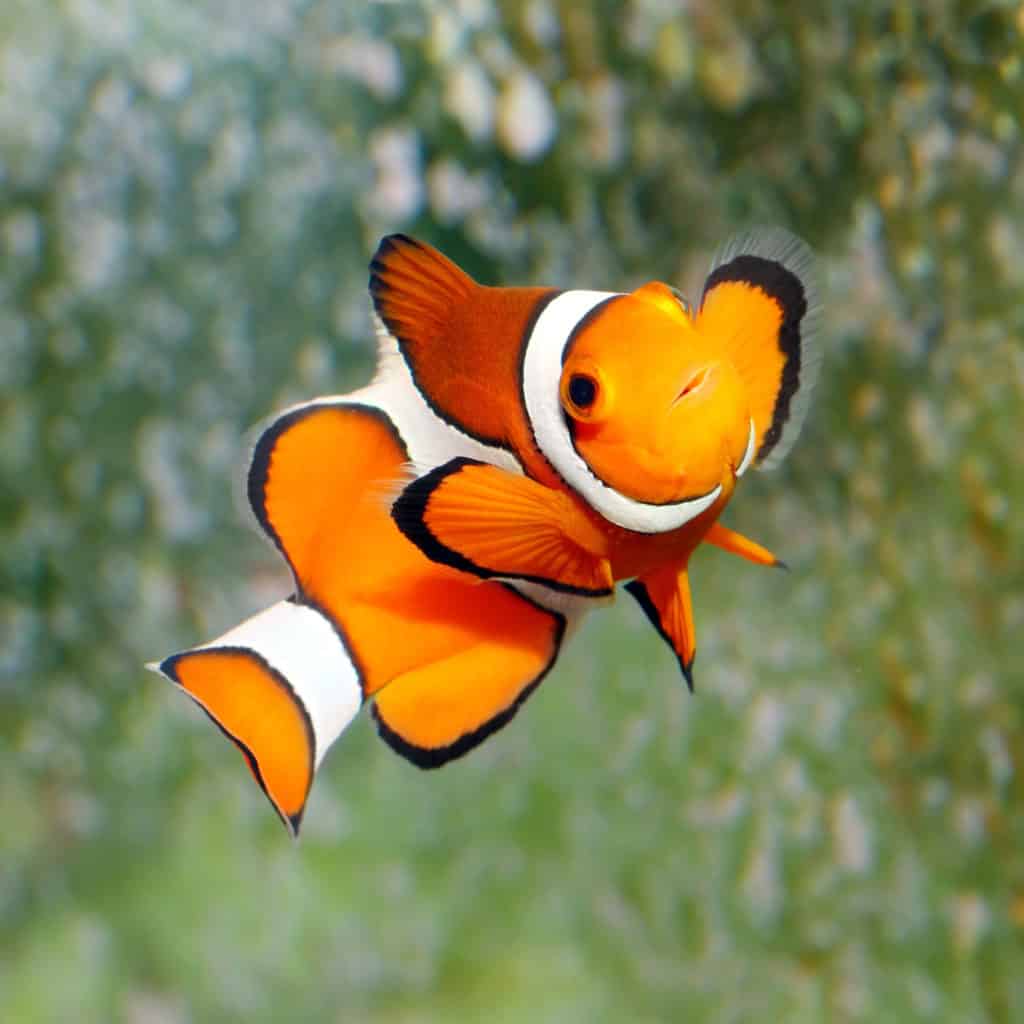
With more than 30 species of clownfish, this bright little fish is a definite favorite among many hobbyists and beginners.
The most popular aquarium clownfish are the Percula and the Ocellaries.
Although they can live in the same tank with their own species, they don’t occupy a big tank area.
They choose a small spot with a weak current.
They grow to a maximum of four inches, but they typically remain smaller, meaning they’re ideal for small tanks.
Since they’re not strong swimmers due to their rounded caudal fins, other stronger species may overpower them.
Clownfish are omnivores, so you can feed them finely chopped table shrimp, algae, frozen fish, and live food.
They’re highly adaptable, equally comfortable living with other tank fish in large communities or alone in a 10-gallon tank.
They may also be able to form symbiotic relationships with anemones, creating an entertaining interaction.
6. Helfrich Firefish
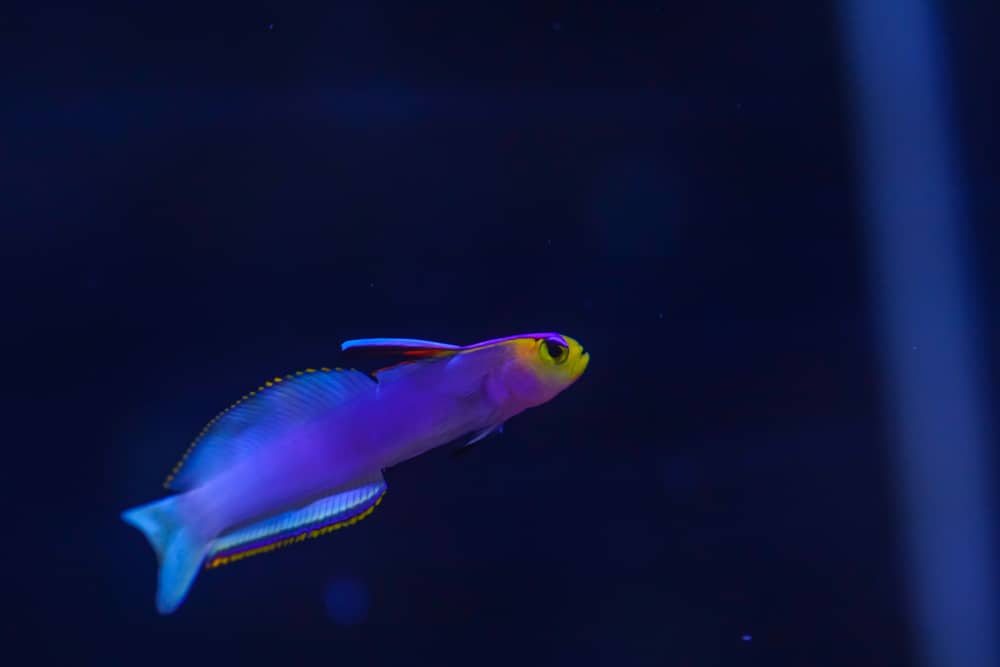
The Helfrich Firefish is the smallest kind of firefish, so it’s a suitable addition to a small 10-gallon tank.
It’s also called the Helfrich’s dartfish and sports a distinctively yellow head and a purple forehead.
Their body has different shades and combinations of white and lavender.
They prefer to use rocks and caves as a shelter and feed on frozen crustaceans such as red plankton, fish roe, and finely chopped krill.
Since they can’t eat from the water’s surface, it’s better to put their food in midwater.
Their striking colors make them highly pleasing to watch as they hover along the water column.
Like other firefish, it’s jumpy and peaceful.
Its only tank requirement is a tight lid and non-aggressive companions.
Since they’re shy creatures, it may be challenging to keep them with other, more boisterous species.
If they get cornered, they could jump out of the tank through small openings in the cover.
7. Transparent Goby
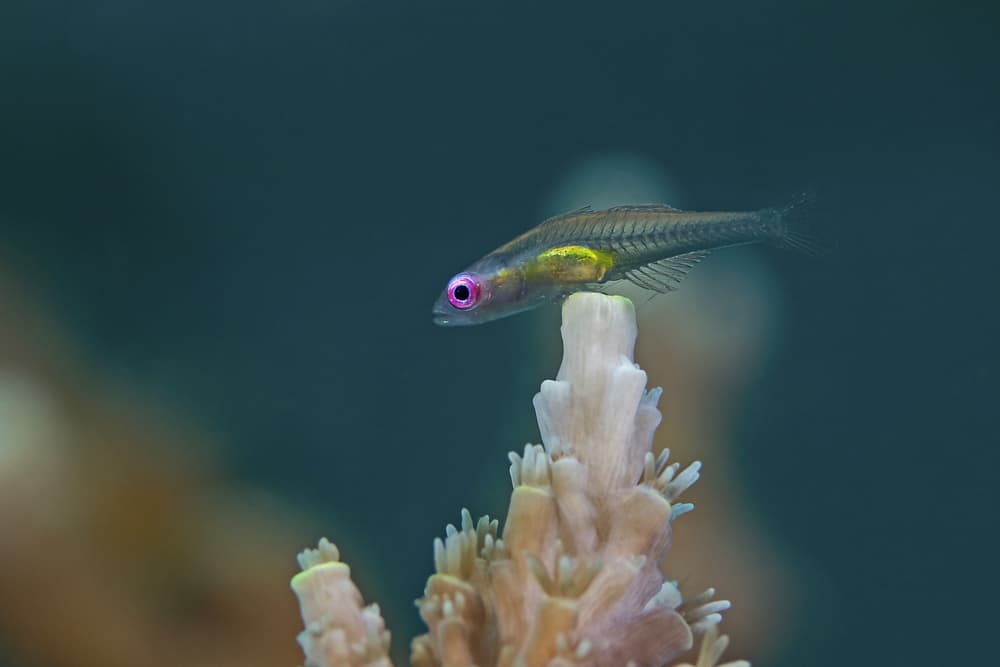
Hailing from the Maldivian and Fijian reefs, the Transparent Goby is also known as the Bridled Goby.
Its transparent skin is covered in orange marks, giving it a unique appearance.
You can see its skeleton and internal organs under the aquarium light.
It can grow up to three inches, making it a perfect addition to a 10-gallon tank.
It’s also simple yet hardy and easily adaptable to home aquariums, perfect for inexperienced hobbyists.
The best place to keep it is a 10-gallon tank with live branching coral to hide in and feed on.
It’s generally a docile species, hardly getting into fights with tankmates.
However, don’t keep more than one transparent goby in your 10-gallon tank since it doesn’t get along well with its own kind in small spaces.
Like other gobies, it’s not a picky eater, feeding on pellets and a variety of shrimp, including brine, table, and frozen Mysis, as well as frozen carnivore food.
Since it’s territorial and needs 900 sq cm of space, keep it alone in your small tank.
8. Pygmy Coral Croucher Goby
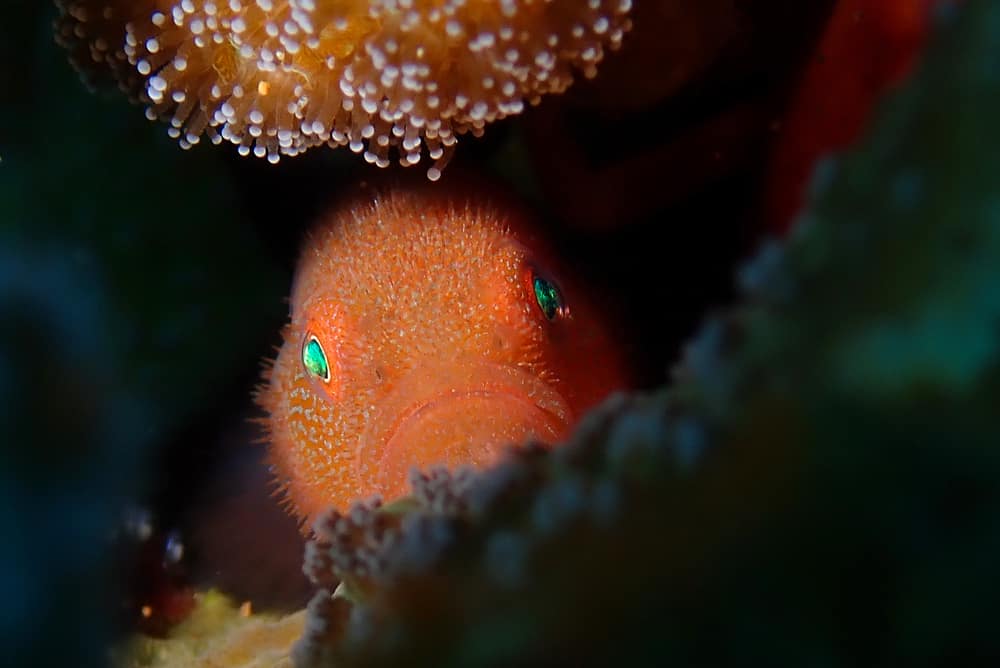
This brilliant bottom-dwelling saltwater fish lives in hard and soft corals.
The croucher goby doesn’t get much larger than an inch, making it a perfect addition to a 10-gallon tank.
It has copper-colored skin with orange-brown hues with a small body, looking like a gumdrop.
Its slim body allows it to move between reef and coral.
The pygmy coral croucher goby is also known as the Velvet Goby, given the fine hairs covering its body.
Although it looks like a Goby, the Velvet Goby is actually a scorpionfish, which means it’s venomous.
It may sting you with its defensive spines if you touch it.
Despite its minute stature, it’s curious and frequently comes out of hiding to watch its tankmates.
It really appreciates lots of live rock, branching coral, rubble, or other decorations that it can use to hide.
9. Hi-Fin Red Banded Goby

Also known as the Striped Goby, the Hi-Fin Red Banded Goby has distinct diagonal stripes on its silver and white skin.
Its yellow face is another unique feature which gives your aquarium a vibrant color.
Since they’re highly peaceful and passive, host them in an aquarium with other gentle creatures.
Surprisingly, they’re also highly territorial, so only keep one Hi-Fin Red Banded Goby in your aquarium, especially if you own a small tank.
This Goby best thrives in an aquarium with generous amounts of live rock with a cozy sand bed.
Given its docile nature, it gets along with other fish, and you may even see them sharing burrows with other species.
Feed it twice a day with Mysis shrimp, finely chopped table shrimp, and brine shrimp.
When it first arrives in the tank, it may not eat until it gets accustomed to its new home.
10. Pajama Cardinal
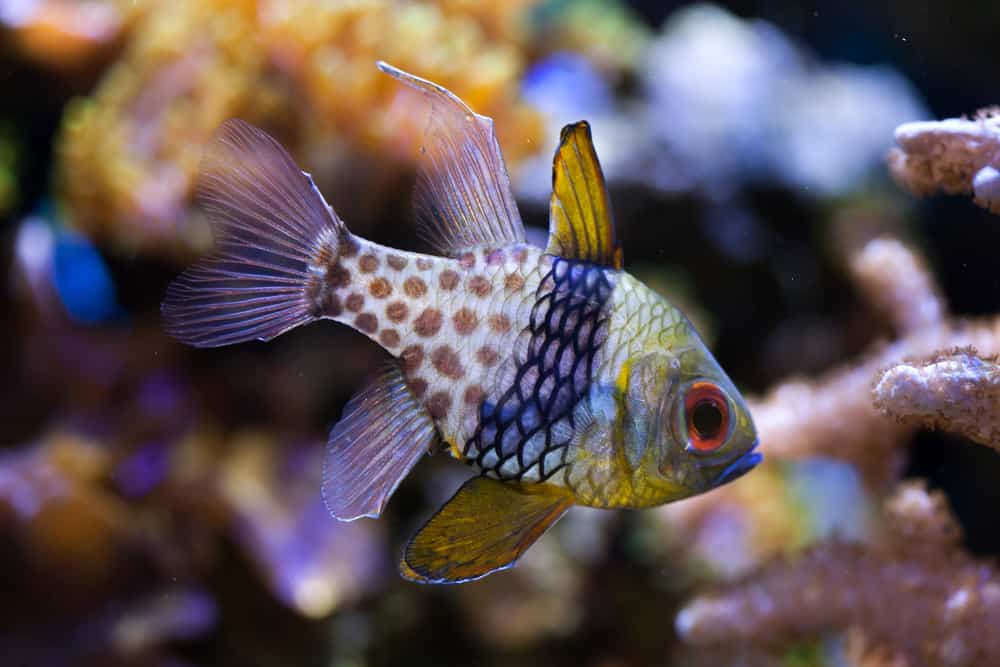
The pajama cardinalfish is packed with a rainbow of colorful spots all over its body ranging from greenish-yellow to silver and orange.
However, this bold coloration doesn’t prevent it from being peaceful and fitting into the saltwater aquarium.
This community fish is a slow swimmer, so it does well with non-aggressive tankmates.
When it comes to feeding, it needs the right balance of meat and flake foods.
Its diet should include feeder shrimp, pellet, bloodworms, marine flesh, and even live feeder fish for larger sizes.
They’re particularly suitable for reef tanks because they don’t bother the invertebrates.
11. Six-Line Wrasse

The six-line wrasse is a small, hardy species that grows up to three inches, so you can keep it in a small tank.
It’s also reef-safe and can be a good cleaner fish, helping larger fish, plants, or rocks get rid of parasites or algae.
It also eats pests and parasites like flatworms and bristle worms.
However, they’re not the most compatible fish when it comes to living with other tankmates.
Smaller fish like fairy wrasses and firefish aren’t good companions for the six-line wrasse since it’s likely to harass them.
When you introduce new fish to the tank, make sure to introduce the six-line wrasse last to prevent it from getting territorial and defensive.
They don’t eat coral, and if you see them picking around coral bases, they may be looking for meaty foods like worms and copepods.
You could feed them standard saltwater food such as pellets or flakes, but they enjoy frozen food and the occasional small live food the most.
12. Tailspot Blenny
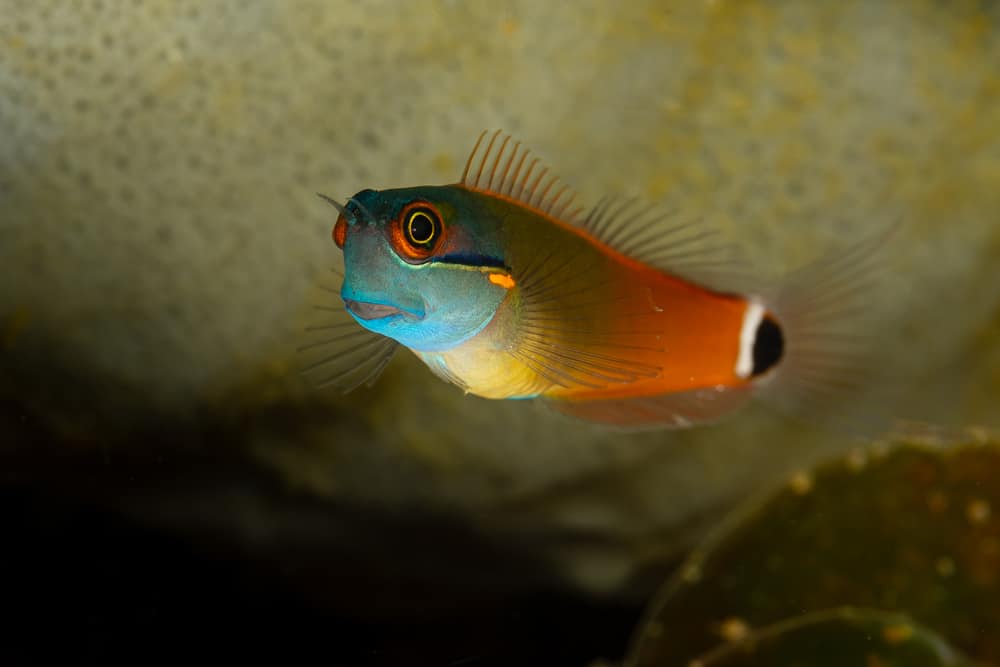
The tailspot blenny is one of the smallest of its kind, suitable for small fish tanks.
It gives your aquarium an attractive look with its brilliant black and orange band below its eyes.
These non-aggressive species come in various colors, including blue, orange, white, and black.
They’re popular among aquarists because they’re easy to take care of, and they’re pretty entertaining.
Like most saltwater fish on this list, it’s a carnivore and does well in a tank with lots of live rock.
13. Purple Firefish
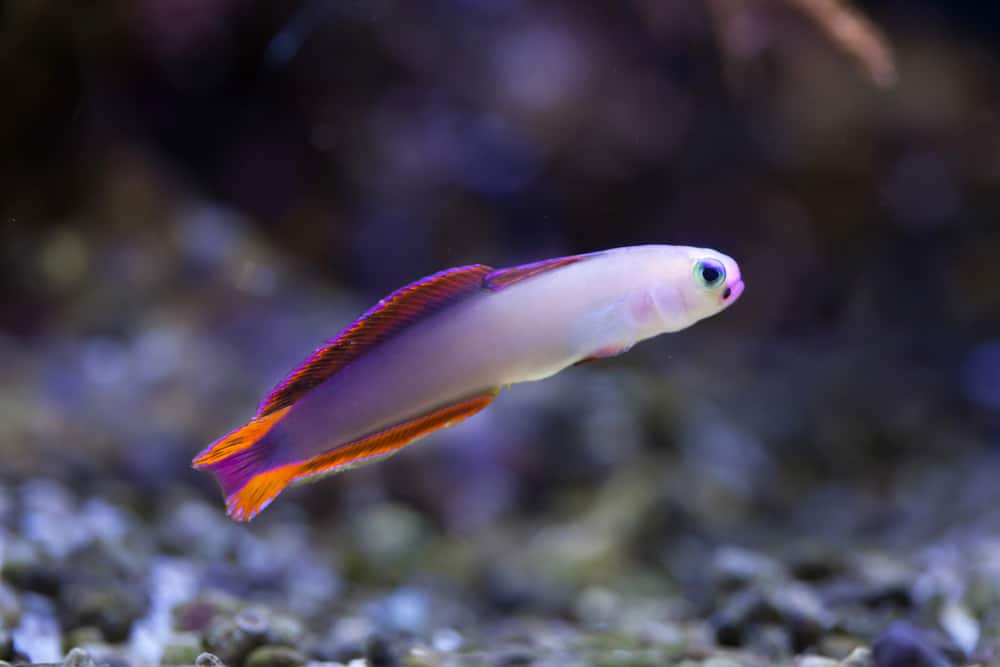
The purple firefish has many other names, such as the fire Goby or the decorated firefish.
Purple firefish are multicolored with a purple face, a white or yellow body, multicolored caudal fin, and red or orange fins.
It’s hardy and disease-resistant and eats most fish food that you give it.
However, it’s the most aggressive among the firefishes, so never stock more than one in your tank.
Since they’re not active, they need lots of hiding places like caves and shelters.
14. Blue-Green Chromis
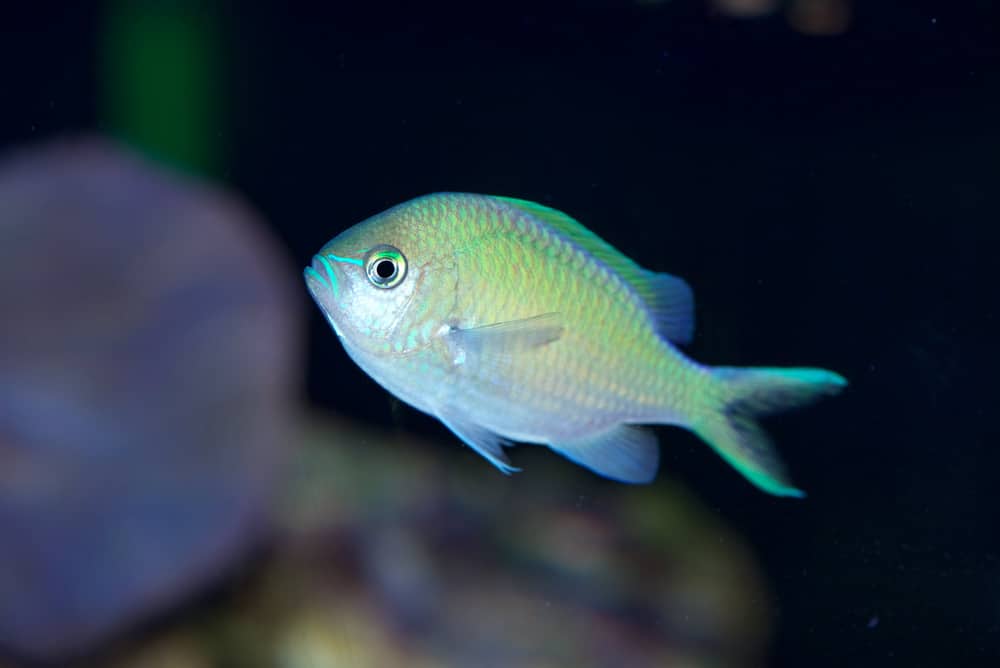
The blue-green Chromis is a damselfish famous for its dazzling beauty and compact size that grows up to 3.5 inches.
They change colors, ranging from dark green to blue-green, depending on the light intensity in the aquarium.
It’s one of the easiest saltwater fish to keep.
Still, you should keep the water quality at optimum levels, or you’ll run the risk of exposing them to illnesses.
If you frequently change the water, feed them properly, and keep them in the company of good tankmates, they can live up to 15 years.
Their diet should have variety since they’re omnivores.
Their best diet will include herbivore flakes plus carnivore food like worms and finely chopped fish or shrimp.
Feed it at least three times a day to mimic its natural habitat diet.
Unlike damselfish, they’re highly peaceful, so you can keep them with their own species.
15. Yellow Line Goby

The yellow line goby is bold, like its colors.
It’s all black with two bright yellow stripes that run horizontally all over its body, from the nose to the nail.
This active species is always in plain view, rarely getting aggressive with other tankmates.
You’re not likely to find wild yellow line gobies outside Brazil since they’re not exported.
They’re cleaner fish that remove dead skin and parasites from other fishes, so bigger fish don’t get aggressive with them.
Unlike other cleaner fish, they eat standard fish food like pellets, flakes, plankton, shrimp, and squid.
16. Orange Stripe Prawn Goby
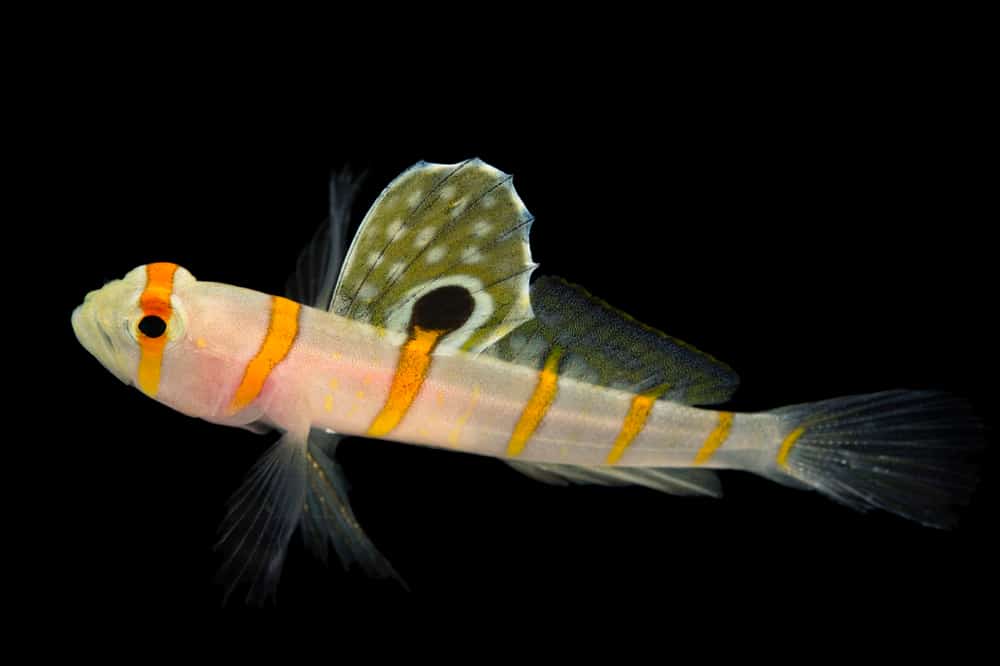
Also known as Randall’s Shrimp Goby, the orange stripe prawn goby is a peaceful fish with a white body and orange stripes.
One of these stripes goes from eye to eye and around the entire head, creating an exquisite look.
It forms a symbiotic relationship with the alpheid shrimp, which is almost blind.
The shrimp digs a burrow while the goby watches out for danger.
Then, they share the shelter.
Since it’s active, it needs lots of swimming and hiding space, with a bed of loose coral rubble and fine sand to sift through.
This one is also a jumper, so make sure you have a tight-fitting lid since it can fit through tiny holes.
17. Neon Goby
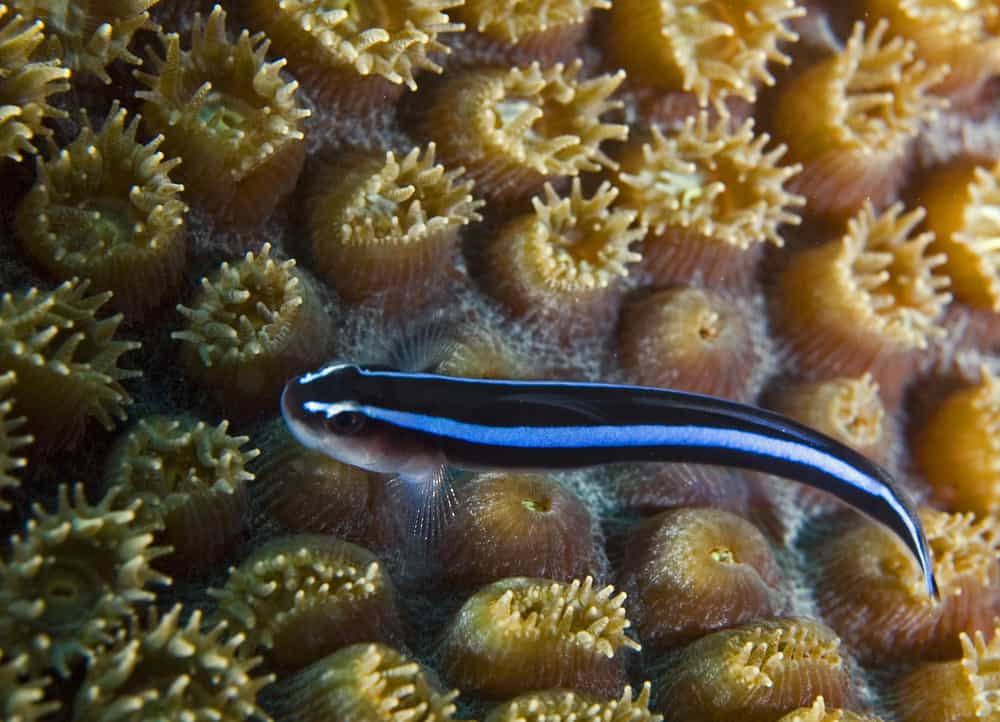
The neon goby is a vibrant little addition to your saltwater tank with the striking blue line running along its body.
It’s also a cleaner fish nibbling around other fish, cleaning their bodies and keeping them healthy.
It’s not uncommon to see the goby willingly go into a larger fish’s mouth or gills.
Don’t be surprised if you see this since it’s part of the cleaning process.
The neon goby is a peaceful community fish, suitable for small tank setups and friendly with other saltwater species.
In a small 10-gallon tank, you won’t have many other fish species to give it enough food.
Therefore, you have to supplement it with carnivore and high-protein food like finely chopped shrimp and frozen treats.
18. Chalk Bass
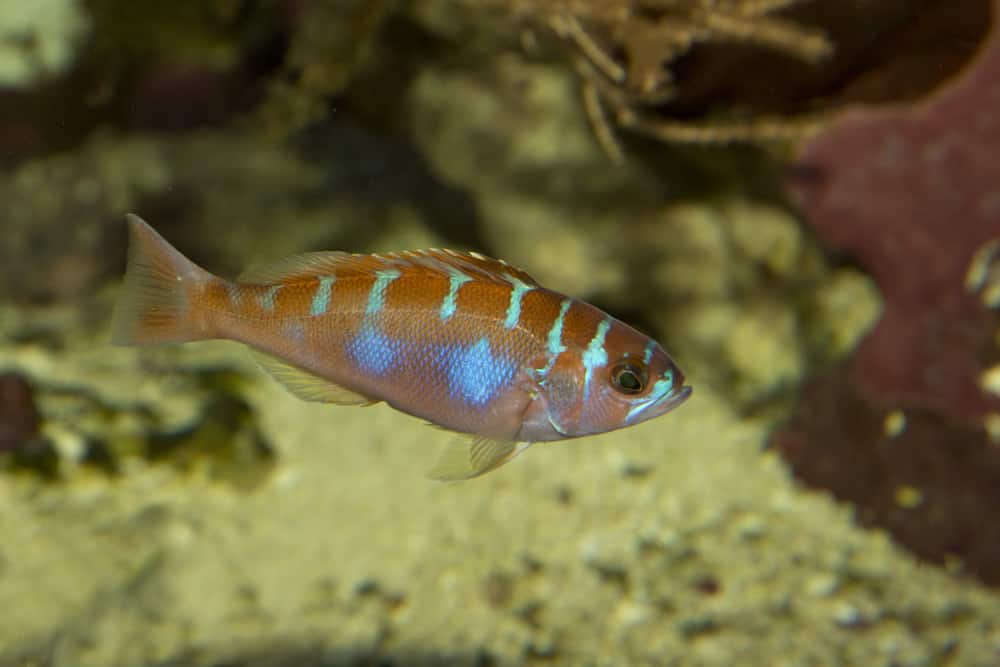
The chalk bass has a distinctive appearance with brilliant patterns of various colors, including orange and light blue.
The fish camouflages in the wild, so it has to change colors depending on the surrounding lights.
Native to the Caribbean and the Atlantic sea, it feels comfortable living in rubble on the ocean floor.
Be sure to provide ample hiding places in the form of live rocks and plants.
Keep the temperature between 72° and 76°F.
In addition to the carnivore diet, make sure to feed it with pigment enhancing food to maintain its dazzling coloration.
Plus, it needs lots of protein in the form of finely chopped krill and squid.
19. Geometric Pygmy Hawkfish
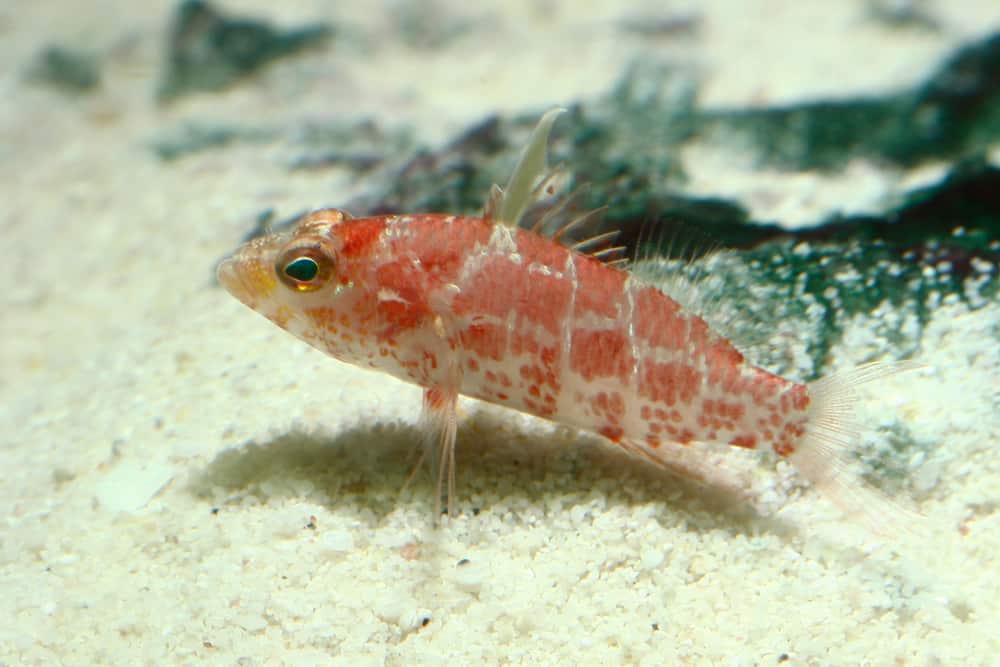
Also known as the Hi Fin Perchlet, the geometric pygmy hawkfish has a long body with orange and white mottles and green eyes.
It’s semi-aggressive, especially towards gobies and blennies.
Make sure not to keep them in the same tank and keep the geometric pygmy hawkfish as the only bottom feeder.
It’s relatively hardy and the right candidate for a small saltwater aquarium.
It feeds both on zooplankton as well as carnivore fish food.
20. Royal Gramma
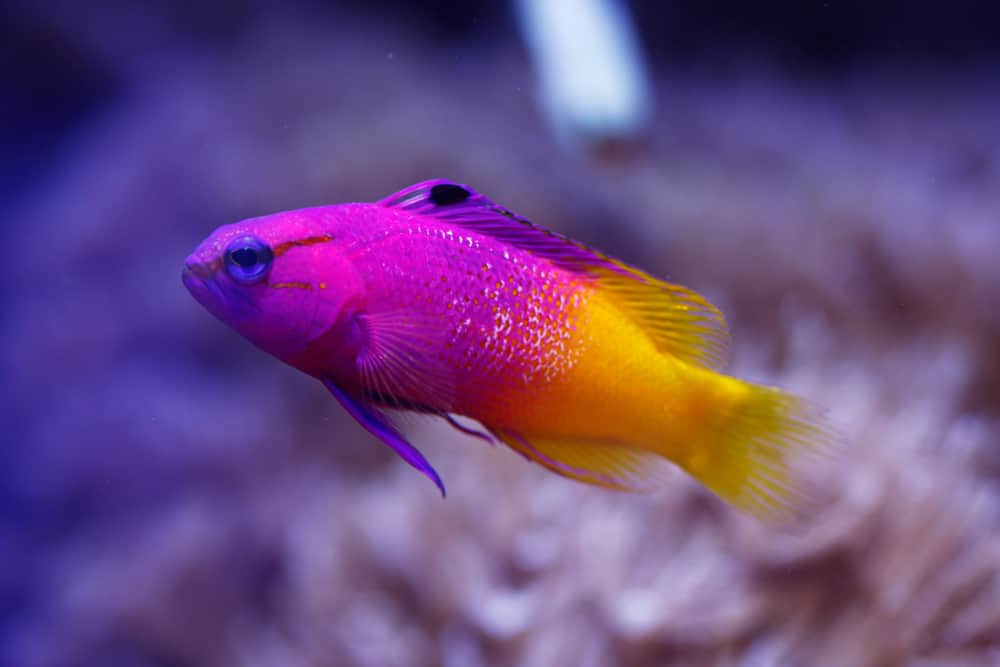
The royal gramma is another nano fish with vibrant colors.
It’s a must-have for many aquarists with its purple and golden body and entertaining and easy-going nature.
It doesn’t get larger than three inches and needs ample rockwork, including coral outcroppings, reefs, and caves.
Since it doesn’t swim much, it mostly burrows under these places.
Plus, don’t keep it under a harsh light.
If the royal gramma is captive-bred, you can give it prepared pellet and flake foods.
However, make sure to regularly intersperse this with carnivore food to prevent it from relying solely on pellets.
Tips About Saltwater Fish in 10-Gallon Tanks

Generally speaking, small fish are better for 10-gallon tanks, but here are some other tips to consider:
- Water Chemistry: Many saltwater fish don’t do well if they’re not in breeding pairs. They can’t tolerate other species, so if you want to keep different species in one tank, make sure to keep the water chemistry at a higher range to maintain life among all species.
- Compatibility: When you want to buy saltwater fish for your tank, make sure it’s compatible with other species in the tank as well as the corals and other creatures. Some of them feed on corals or don’t leave other creatures alone.
- Tank Habitat: There are three types of saltwater tanks in terms of habitats: fish-only tanks with no corals, coral skeletons, and live corals. The scenario you choose will depend on your fish and its natural habitat.
- Aquarium Region: Fish that live in different tank parts will be more compatible and friendlier with other species.
- Swimming Space: Active fish need lots of swimming space, so no matter what size it is, it’s not a good choice for a small tank if it’s active.
- Food: Most saltwater fish that go with small tanks are carnivores. Still, look for ones that eat a wide variety of food, including frozen treats, pellets, and flakes.
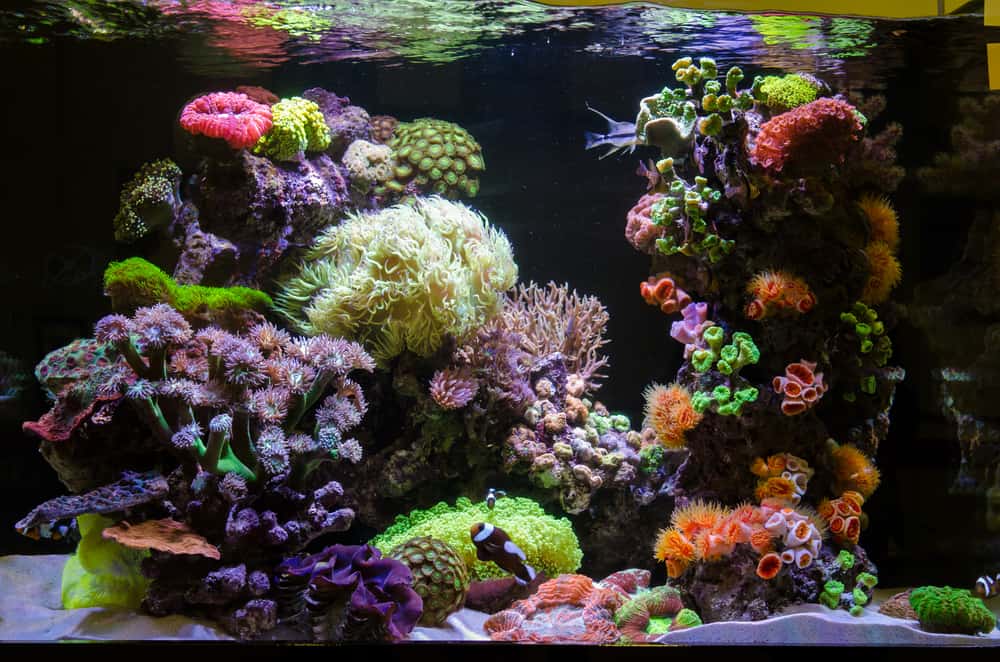
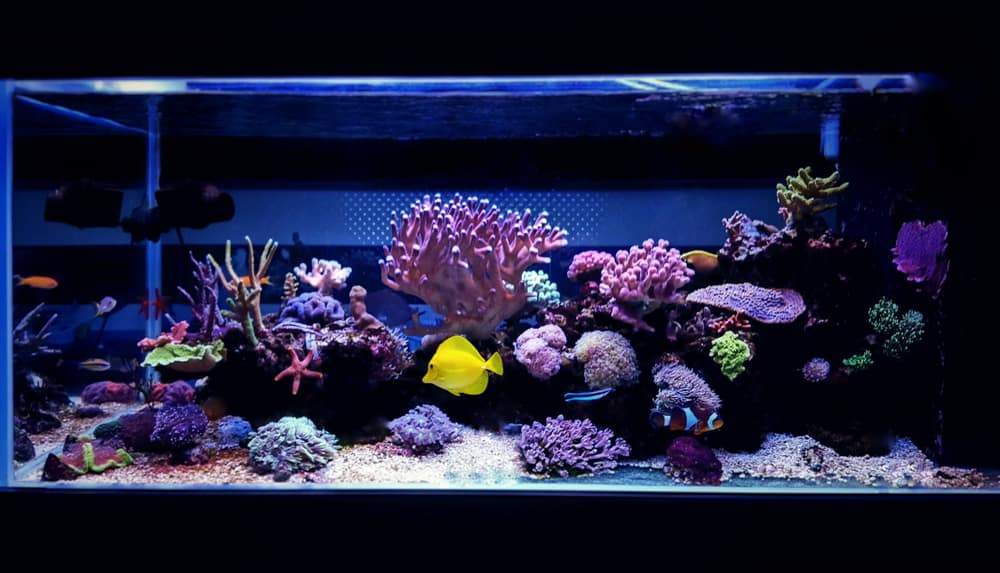

Thank you so much this helped me so much !